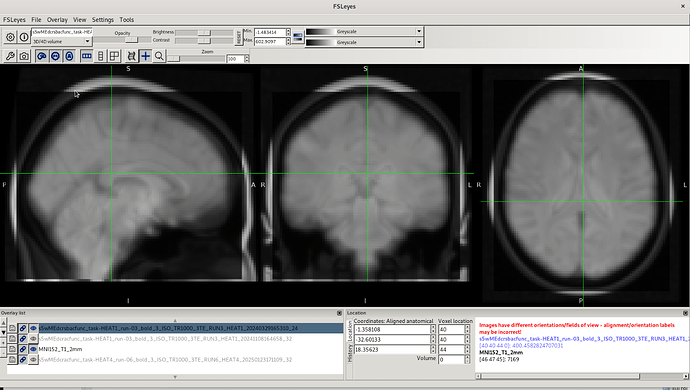Hello,
I’m reaching out for some advice regarding preprocessing of data acquired in the PA (posterior-to-anterior) phase encoding direction on a 3T scanner.
After preprocessing, I’ve noticed that the overall brain size appears reduced, particularly with noticeable signal loss or distortion in the frontal regions, compared to data acquired with the same sequence in the AP direction. It also seems that distortion correction and normalization may not be working properly.
Here are the details of my acquisition and preprocessing steps:
- Sequence: Multi-echo EPI (TR = 1s; TE1 = 13.00 ms, TE2 = 31.26 ms, TE3 = 49.52 ms; FoV = 210 mm; multiband factor = 4)
- Preprocessing pipeline:
- Outlier detection
- Slice timing correction (SPM12)
- Motion correction (FSL)
- Distortion correction (FSL)
- Denoising using TEDANA
- Coregistration and normalization (SPM12)
- Spatial smoothing (6mm FWHM, SPM12)
I would greatly appreciate any suggestions or insights—especially related to preprocessing of PA-direction EPI images or multi-echo sequences—that might help resolve the issues I’m encountering.
Below is an example of one participant’s image after spatial smoothing has been completed.
Thank you in advance for your help!
Best regard,
Eui-Jin

